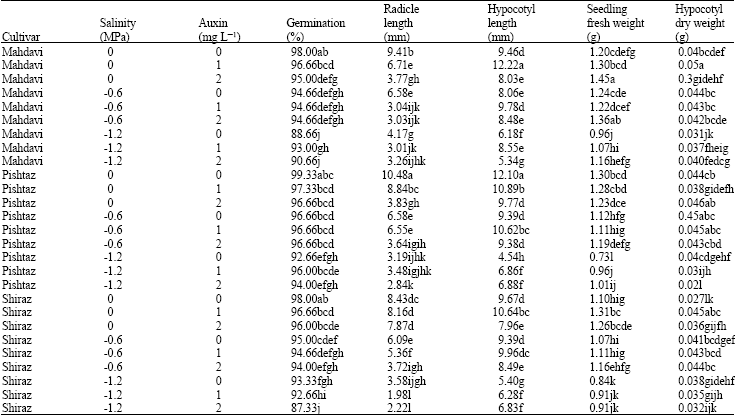Research Article
Effect of Auxin and Salt Stress (NaCl) on Seed Germination of Wheat Cultivars (Triticum aestivum L.)
Abourayhan Campus, University of Tehran, Tehran, Iran
Seyed Ali Mohammad Modarres Sanavy
Department of Agronomy, Faculty of Agricultural, Tarbiat Modarres University, P.O. Box 14115-336, Tehran, Iran
Saeed Yousefzadeh
Department of Agronomy, Faculty of Agricultural, Tarbiat Modarres University, P.O. Box 14115-336, Tehran, Iran












